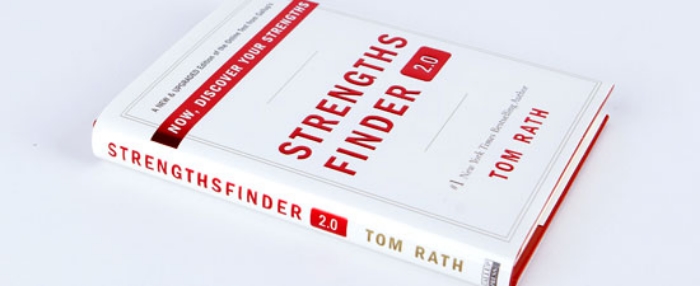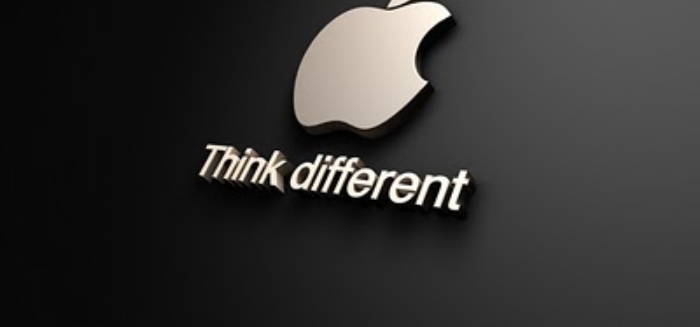The Shotgun Method
Raise your hand if you have ever browsed monster.com and indeed.com using the shot-gun method - Copy. Paste. Submit - Copy. Paste. Submit. I just applied to 10 jobs!
Well congratulations Butch Cassidy, how has that been working for you? Don't get me wrong, I am guilty of the same crazy, desperate, late-night methods and still expected overly ambitious results. In marketing we refer to this as a push strategy - "I am going to blast content (read: job applications) out into the world in the hopes of hitting interested customers". This however can be a waste of time and in the long run won't sustain a healthy career.
Wouldn't it be great if employers approached you instead?
This is what we call a pull strategy, which takes more time and investment. So Happy 2014, Resolution #1 - invest energy into your own personal brand. Approaching your career like a business, this post will help you brand and market yourself concisely and effectively. Follow the steps!
Phase A: Mini-Brand Building in 5 steps
Now it's time to shut the doors and windows and hang up the "out to lunch" sign. We have to work at getting your house in order, finding your drive, figuring out which strengths are important, how to package them and glue them together.
1. Strengths Finder by Gallup
Most people have an idea of their strengths but can't pinpoint them. Let's face it, these are your strengths - you use them most often without realizing it, no effort required. Now its time for a third party assessment, set time aside to take the Strengths Finder exercise (warning - 170 questions). Click Here. Once you've finished the survey, I would suggest you write down your top 5 strengths and navigate here. Read about yourself and highlight phrases and words that stand out to you. Can you tie these strengths back to your professional skill set (Powerpoint, Excel, Photoshop, Financial Analysis, Interface Design) ?
2. Personal vs. Business Purpose(s)
Now that you know what stregnths you're good at, it's time to understand why you're good at them. You know what you can do, but now the question is "why". This is a key step in the brand building process because it helps employers make sense and organize your skills towards some end goal. In the context of a purpose, strengths come alive, gain conviction and receive credibility.
When it comes to applying to jobs everyone should have two main purposes in mind - a business and personal purpose. Professional purpose is very formulaic and always has an end goal of driving business, sales, marketshare or adding value. Find yours by answering these questions: How do you continually add value to a business? Is it measurable? What is the impact? The more specific you get, the more effective your brand will be in conveying its uniqueness and value. A good driving statement will help convince employers that in front of deadlines, pressures and uncertainty your main drive will remain with you and will always motivate you to do better.
Personal purpose can often be found by answering the question "why" 5 times. Pose yourself a question about something you like to do and ask yourself "why" 5 times. After several sessions you may notice yourself hovering over a few key points, which makes up your personal purpose.
Here is my example -
- Strengths Finder Skills - Relator, Ideation, Adaptability, Empathy, Connectedness
- Professional Skills - Brand Building, Segmentation, Marketing, Strategy, Research, Analysis, Ideation, Design, Presenting
- Business Purpose - I am driven to help medium size companies in X industry to develop loyal, repeat fans by cultivating and leveraging brand to drive sales and communicate a company's unique value.
- Personal Purpose - I am dedicated to helping people communicate effectively by enlightening them to linguistic phenomenon, brand building insights and the innovation process.
3. Advanced Brainstorming Techniques
Ok, so now you have a ton of abstract and nebulous descriptors. Thought: Intelligence comes from the latin words Inter (between) and Legere (to pick out or choose). Let's get intelligent - find connections, themes and strokes of insight.
- Post Its - Write all phrases, words, sentences from steps 1 & 2 on post its. Scatter them on a wall and try organizing them. Perhaps you group them by similarities in columns. Perhaps you put your purposes in the middle and branch out like a tree. There is no wrong way to organize your thoughts.
- Voice Record - Look at the wall and record yourself trying to explain everything you're about in 2 mins. 1 min. 30 sec. Talking something out is much different than thinking about it, reading it, or writing it - you may find new ideas unfurl themselves quite magically. I highly suggest this method.
- 360 Degree Review - Don't forget your friends and collogues. They most likely hold vital insights about you that they aren't sharing. Talk to them, start a conversation and try to collect insights based on their perspective on the strengths that make your career.
Once you have your insights - hold onto them for your slogan and positioning statement.
4. Brand Driver by Landor
The grunt work is over. Time to be creative and extend your brand from its core to the visual elements. While some would disregard this step as artistic mumbo jumbo, not only does this platform drive external decisions (marketing and communications) but it can also provide further insight into how you wish your brand to be perceived. Serious straitlaced professional or funky creative office fixture?
Ready to have fun? First step. Select nine pictures that you think best represent you, your career and your brand. Each of the nine pictures must be drawn from a specific category: Automobile, Color, Activity, Furniture, Mood, Object, Animal, Architecture and Drink. Step two. Select 4 adjectives that describe your brand to be paired with the visual brand driver.
Example Visual Brand Driver
5. Position Statement, Slogan & Packaging
Finally you have to tie the lose ends together and shine the surface of your brand so that it is all under one roof. The final steps are to develop a slogan, position statement, brand story and brand hobbies. You must also develop a master sheet that summarizes all the brand architecture you have created from the above 5 steps. When continuing on to communicating your brand, writing cover letters and resumes, you should have your brand master sheet at hand to provide insights. Please see the slideshare slides for more information on this step.
Phase B: Modern Marketing Exercises & Tools
Now that you have the intangible characteristics and framework of your brand nailed down, we have to consider how and where you will convey the brand externally. With this brand you will already approach the application process as a sniper and less as a shotgun, launching yourself to the top of a recruiter's list. Here I provide you with a few tricks that I have developed. However, as with all good marketing and segmenting, keep in mind where your recruiters lie - online, offline, career fairs, office visits? How can you develop your own marcomm material to target different types of professionals? Be creative and adapt everything you can!
1. Advertisements
Click Ad to Enlarge
Why would you make an ad of yourself? Well, if you are able to make a convincing advertisement then it proves that you thoroughly understand your own brand and its unique value proposition. Let's have you start by following a simple template which you can easily replicate. Here is an example ad from Cisco. NOTICE - on the left the product lists its qualifications, skills and specs. However on the right the product demonstrates their brand promise in a very punchy way. Think you can mimic this basic advertisement? Give it a try!
Cisco Advertisement
2. LinkedIn
LinkedIn is obviously a key tool for any modern professional. It is important that you setup an irresistible profile that shows up in searches and can guide anyone through an "initial interview" simulation - answering all their questions.
- Customized URL - apply for one so that you can send your link to anyone anywhere in the world
- Profile Picture - It's worth a thousand words. So choose a good picture that makes you stand out or appear approachable
- Detailed Brevity - If people see a wall of text - they have already checked out. There are only two main rules I follow when writing text for a presentation. First, a line of text should not go onto the second line unless it is extremely important and can be justified. Second, you can either choose between 3 or 5 bullet points, without exception. If you cannot fit your information into this framework, it shouldn't be there.
- Get Active In Groups - Find groups that are relevant to you and join. However don't be a silent observer, make a commitment to interact at least once a day and finally post content that you think fellow group members will be helpful. Most of all be genuine, genuine, genuine.
- Recommendations & Endorsements - The rule here is that to receive you must first give. Make a list of five people you could write a recommendation for and do one a day. I guarantee you will get 1-2 recommendations in return. The golden rule applies - do onto others what you want done to you.
- Professional Summary & Content - A professional summary should be a direct plug from your branding work in phase A. You should be using your positioning statement, slogan and any other brand relevant content. Remember also to not be to wordy, paragraphs no longer than 3 lines. LinkedIn also recently added the feature to upload powerpoints, photos and videos. Take advantage and upload stand-out powerpoints you created, written work, your video resume and also you own advertisement (don't forget to add descriptions to give content good context).
3. Resume (Brand) Website
Nowadays the ultimate branding tool is your own website. Many professionals, thought leaders and leaders have their own website - why can't you? I would actually suggest finding certain thought leaders in your industry and visiting their websites. Monkey see, monkey do. Learn how they talk about themselves, structure their website etc - imitation is the best form of flattery.
Platforms
- Squarespace - my favorite
- Wix.com
- Weebly
- Jigsy.com
- Snap Pages
- Yola
Content -
Remember to always put your brand first, then evidence to your brand claims second.
- FIRST - Slogan and Positioning Statement
- SECOND - Personal and Business Purposes - a good (short) backstory to hook your viewers
- Video Resume
- Your unique "branded" perspective of your industry - how do you see things and what unique viewpoints do you have
- Recommendations from pervious employers and colleagues
- Quantifiable progress or success on projects
- Portfolios and examples of work
- Lastly, a blog demonstrating your investment in the future of your industry
4. Visual Resume
Another neat trick is a visual resume.
5. Youtube Video Resume
The video itself explains its purpose, my professional purpose and my skill set. Ah, the beauty of film. You also may notice the use of a button menu to direct people to specific sections that are most relevant to them - save your audience from having to watch a film longer than 1.5 minutes.










